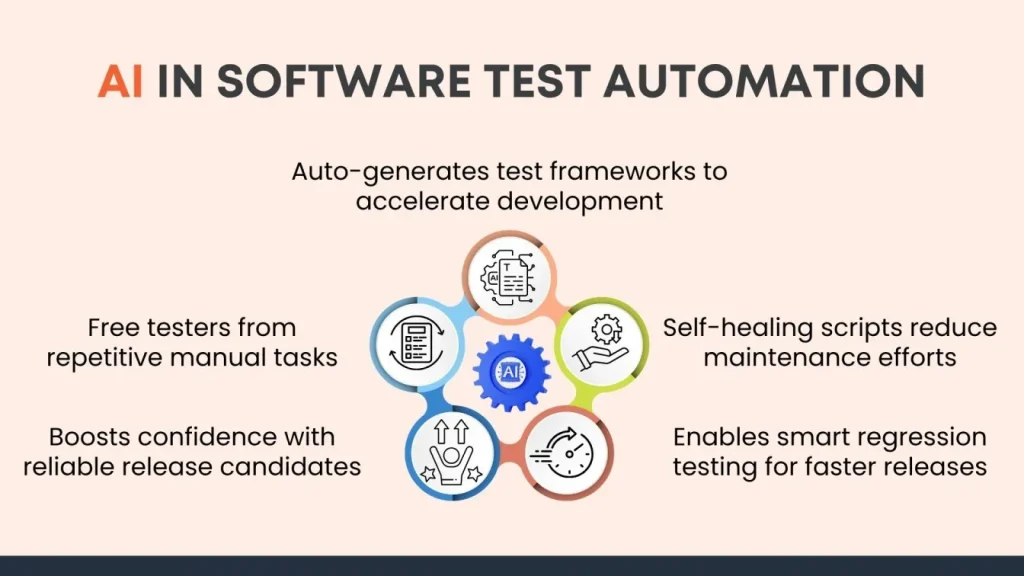In today’s fast-paced software development landscape, organizations are constantly seeking ways to deliver high-quality products faster. A Test Automation Platform has become an essential tool for achieving this goal. By automating repetitive testing tasks, teams can not only reduce manual effort but also increase accuracy, consistency, and overall productivity. In this article, we’ll explore how a robust test automation platform can transform your software testing processes, key features to look for, best practices, and the future of test automation.
Understanding a Test Automation Platform
A Test Automation Platform is a comprehensive system designed to automate the execution of test cases across different software applications. Unlike manual testing, where human testers execute each scenario step by step, a test automation platform allows you to run scripts that mimic user behavior, validate functionality, and detect errors quickly.
These platforms support multiple testing types, including functional, regression, performance, and integration testing. The automation reduces the risk of human error, accelerates testing cycles, and allows for continuous testing in agile and DevOps environments.
Key Features of a Test Automation Platform
When choosing a test automation platform, several features can make a significant difference in efficiency and effectiveness:
- Cross-Browser and Cross-Device Support
Modern applications need to work seamlessly across multiple browsers, devices, and operating systems. A good platform should allow testers to run scripts across different environments effortlessly. - Reusable Test Scripts
Reusability ensures that once you write a test case, it can be used for multiple projects or scenarios. This saves time and effort, especially for regression testing. - Integration with CI/CD Pipelines
Continuous Integration and Continuous Deployment (CI/CD) require automated tests to be run with every code change. Platforms that integrate with tools like Jenkins, GitLab, or Azure DevOps streamline this process. - Comprehensive Reporting and Analytics
Automated testing generates a lot of data. Look for a platform that offers detailed reports, dashboards, and trend analysis to help teams make informed decisions. - AI-Powered Testing Capabilities
Advanced test automation platforms use AI to detect UI changes, predict failures, and optimize test coverage, reducing manual oversight and enhancing accuracy.
Benefits of Using a Test Automation Platform
The adoption of a test automation platform provides multiple tangible benefits:
- Faster Time-to-Market
Automated tests run significantly faster than manual ones, allowing for quicker release cycles and rapid delivery of features. - Improved Accuracy and Reliability
Automation eliminates human errors, ensuring consistent results every time tests are executed. - Cost Efficiency
Although initial setup may require investment, automation reduces long-term costs by minimizing manual labor and catching bugs earlier in the development cycle. - Enhanced Test Coverage
Platforms can execute thousands of test cases across multiple scenarios, covering areas that manual testing may overlook. - Support for Agile and DevOps Practices
Automated testing enables continuous testing and integration, aligning perfectly with Agile sprints and DevOps workflows.
Best Practices for Implementing a Test Automation Platform
To maximize the benefits of a test automation platform, consider the following best practices:
- Start Small and Scale Gradually
Begin with high-value test cases and gradually expand automation coverage. Prioritize repetitive, time-consuming tasks first. - Maintain Test Scripts Regularly
Applications evolve constantly, and so should your test scripts. Regular maintenance ensures accuracy and reduces false positives. - Train Your Team
Invest in proper training for your testers and developers to fully leverage the platform’s capabilities. - Integrate with Existing Tools
A seamless integration with CI/CD tools, bug tracking systems, and test management tools enhances workflow efficiency. - Monitor and Analyze Results
Use the analytics features of the platform to identify trends, optimize testing strategies, and make data-driven decisions.
Choosing the Right Test Automation Platform
Selecting the right platform depends on your project needs, budget, and technical stack. Here are a few considerations:
- Scalability: Can the platform handle large-scale projects and multiple concurrent users?
- Ease of Use: Does it offer a user-friendly interface for testers of varying skill levels?
- Support and Community: Strong customer support and an active community can help resolve challenges quickly.
- Compatibility: Ensure the platform supports your application’s technology stack and testing requirements.
Popular platforms in the market include Selenium, TestComplete, Katalon Studio, and UFT One, each offering unique strengths and features for different use cases.
The Future of Test Automation Platforms
Test automation is evolving rapidly with advancements in AI, machine learning, and cloud computing. Future platforms are expected to offer:
- Self-Healing Tests: Scripts that automatically adjust to changes in the application UI.
- AI-Driven Test Case Generation: AI algorithms that identify gaps in testing coverage and suggest new test cases.
- Cloud-Based Testing: Flexible platforms that allow teams to execute tests on scalable cloud infrastructure.
These innovations will further reduce manual intervention, improve efficiency, and support continuous delivery models for modern software development.
Conclusion
A Test Automation Platform is no longer a luxury—it’s a necessity for organizations aiming to deliver high-quality software at speed. By automating repetitive tasks, integrating with CI/CD pipelines, and leveraging AI-driven insights, businesses can improve efficiency, reduce errors, and accelerate time-to-market.
Investing in the right platform, following best practices, and staying updated with emerging trends will ensure that your test automation strategy continues to deliver measurable value. Whether you’re a startup or an enterprise-level organization, embracing a test automation platform is a step toward smarter, faster, and more reliable software development.


